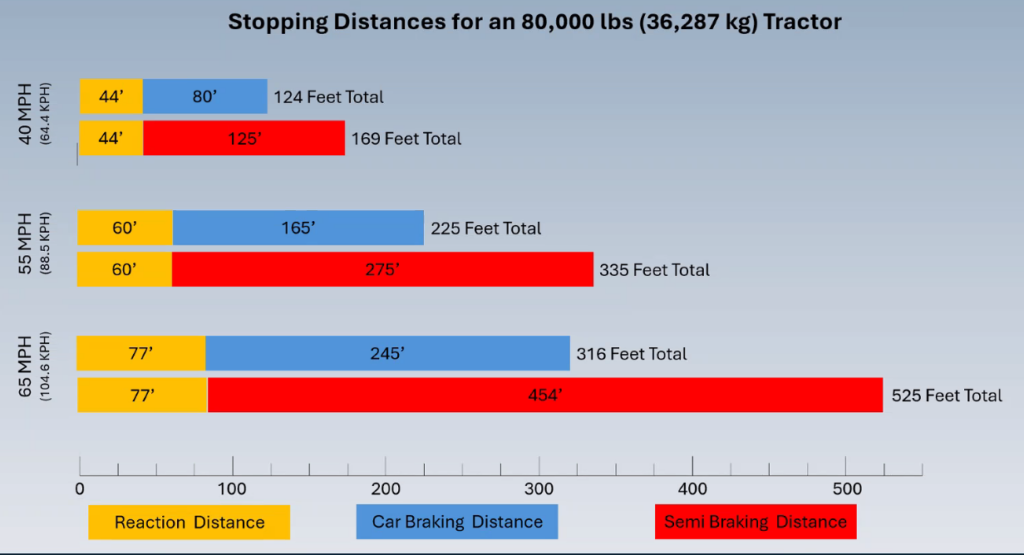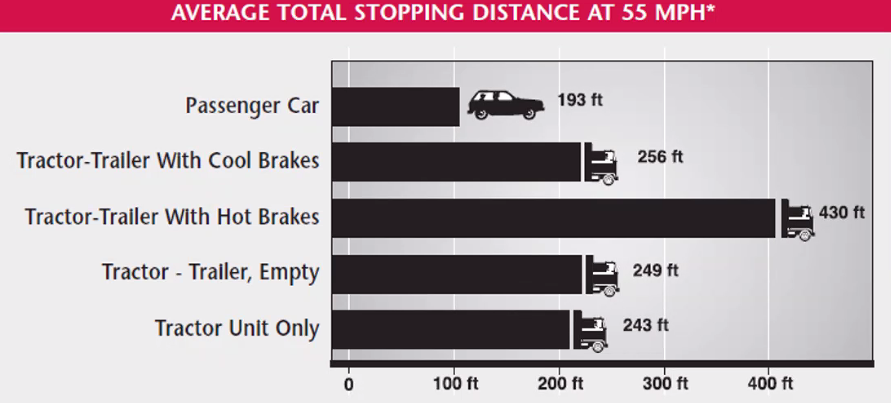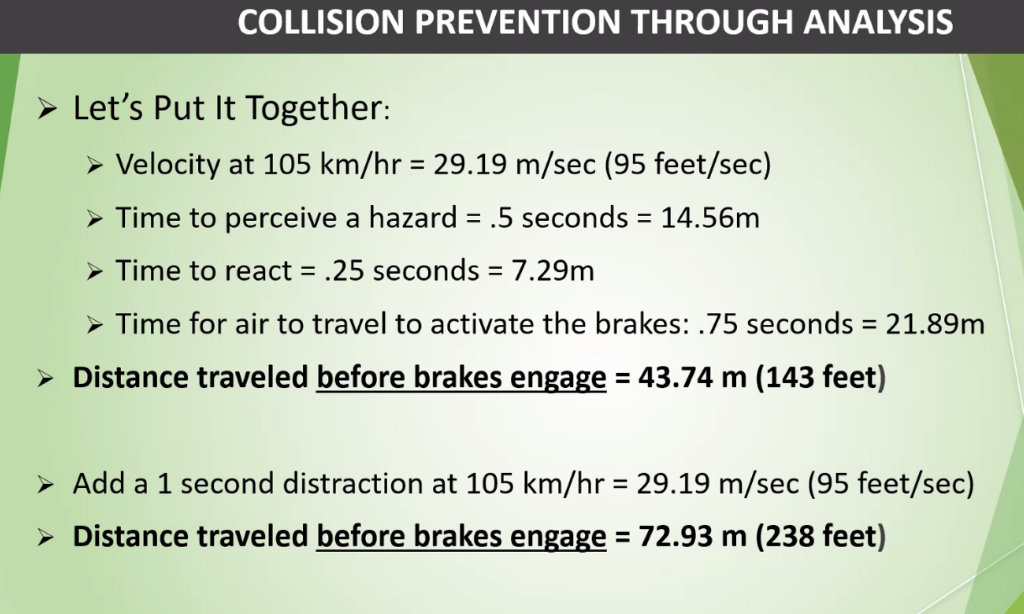Calculation and speed analysis can help prevent collisions
Speeding is the number one conviction in Ontario, accounting for more than 50% of all charges, according Michael Hinsperger, commercial vehicle consultant and collision specialist at Frontline Commercial Vehicle Solutions, speaking at a Private Motor Truck Council of Canada webinar.
In 2021, speeding caused 81 road fatalities in Ontario, a 31% increase compared to the year before.
And while other factors like impairment, fatigue and distractions are also common causes of commercial vehicle collisions, factors involved in speeding pose additional danger on the road.
For example, if a driver is operating the truck at around 105 km/h, the vehicle can travel two-thirds of a football field in distance from the moment the driver notices the hazard on the road and the vehicle is fully stopped, Hinsperger says.
Stopping distances and velocity
To address the issue and prevent collisions, he suggests truckers consider stopping distances, braking efficiency, and velocity. This can prevent a collision by helping to calculate the distance a driver is traveling while seeing a hazard, reacting to it, and the time to activate the brakes.
“Converting speed into meters per second really helps me get my head around the distance I’ve traveled at certain speeds.”
For example, if a vehicle is traveling at 105 km/h, you would multiply 105 km/h by 0.278 to get the speed in meters/second, which is approximately 29.19 m/s.
“You can do this with any speed, and convert it by that one consistent [factor] – n 0.278,” Hinsperger says.
Reflecting on his investigative experience at Waterloo police, 20 years as a CVSA commercial vehicle inspector and collision analyst, he says the speed of a vehicle directly increases the distance required to stop it.

Several factors influence the stopping distance of a truck: its weight, braking efficiency and braking activation time, as well as the driver’s perception and reaction time.
“[The latter] is one that investigators use a lot when they’re looking at the point of possible [hazard] perception versus point of actual perception,” Hinsperger explains.
But this is not the only factor that contributes to stopping distances.
Braking efficiency
As brakes are applied and friction builds up, heat is produced, and the expanding brake drum reduces braking efficiency.
This is why a tractor-trailer with cool brakes takes around 256 ft. to stop at the speed of 55 mph (88 km/h), while the same tractor-trailer with hot brakes traveling at the same speed would stop after 430 ft., according to the National Highway Traffic Safety Administration data.

All these factors combined, a truck driver traveling at 105 km/h would spend 0.5 seconds to perceive a hazard, and an additional 0.25 seconds is required to react, which would result in a truck traveling more than 29 m/s, 14,5m/s and 7.29 m/s, respectively, Hinsperger demonstrated as an example.
Air would travel to activate the breaks in 0.75 seconds, during which the vehicle would have traveled another 21.89 m/s.
Therefore, Hinsperger sums up, the distance traveled by the truck before brakes engage would equal 43.74 meters (143 ft).
“Now, we add any kind of distraction we get in the cab (we may have looked down to put our coffee in our cup holder, a number of things that we could have done in one second). But if 105 km/h, [is] considered 29.19 m/s, to put it all together, the distance traveled before the brakes even start to engage the 72.93 meters – or three quarters the length of a football field,” he says, highlighting the importance of maintaining focus while driving and allowing for a safe following distance to account for potential distractions and ensure enough time to react and avoid accidents.

Have your say
This is a moderated forum. Comments will no longer be published unless they are accompanied by a first and last name and a verifiable email address. (Today's Trucking will not publish or share the email address.) Profane language and content deemed to be libelous, racist, or threatening in nature will not be published under any circumstances.
After hours on the road, we tend to underestimate the importance of staying focused. Great article on braking distances – looking forward to more insightful reads like this. It’s a pleasure to dive into detailed information.